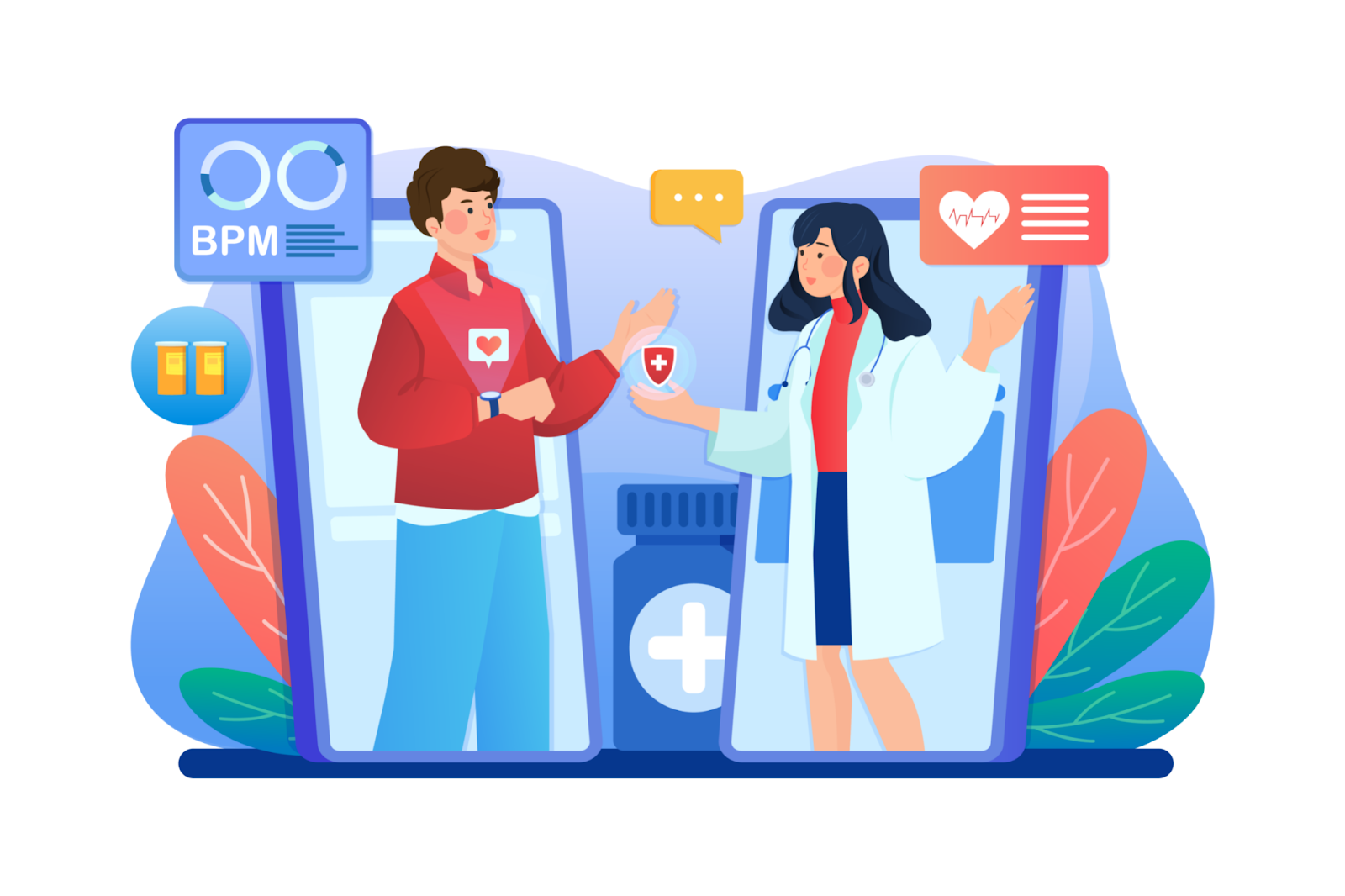5 Ways Telehealth & RPM Drive Patient Satisfaction
Patient satisfaction goes well beyond healing. Your physicians can be the absolute best at their given practice, but if patients don’t feel supported, valued, respected, or heard, then it often doesn’t matter. Practices with the happiest patients are the ones who build relationships with their patients, from the front desk, to the nurses, to their primary doctor. Those relationships are what bring patients in, and keep them returning to their trusted health providers, which means that patient satisfaction correlates directly to your overall profitability.

Happier Patients = More Patients = More Income
It’s as simple as that. Telehealth and remote patient monitoring (RPM) hold unlimited potential to positively impact patient satisfaction, providing a better, more seamless communication line between you and your patient. You no longer have to wait for a scheduled appointment to check on your patients and build that trust with them, which is why remote patient monitoring is essential to any effective patient care management system.
Let’s take a deeper look at the different aspects of patient satisfaction.
The Numbers Tell the Story
Let’s start with the numbers, since you really can’t argue with math. A Nationwide Telehealth Impact Surveyreport found an overall patient satisfaction rate of just under 80% in April of 2021.
The main breakdown showed that:
- 78% feel confident addressing health concerns via telehealth
- 78% receive telehealth care through their existing provider
- 76% believe telehealth removes obstacles in transportation
- 79% find the technology easy to use
- 83% report strong doctor-patient communication
- 79% are satisfied with their telehealth visits
- 83% affirm good visit quality
The J.D. Power U.S. Telehealth Satisfaction Study reports similar findings, with an 86% patient telehealth satisfaction rate post-COVID.
These findings give concrete evidence to support the increasingly positive attitude patients have towards telehealth. So if your practice is hoping to retain more patients, how can your practice keep up the momentum and drive patient satisfaction rates even higher?

5 Ways Telehealth and RPM Drive Patient Satisfaction
1. Improving Doctor-Patient Relationships
Relationships of trust between doctors and patients are so important because they directly influence patient outcomes and attitudes. Some of the main ways telehealth strengthens doctor-patient relationships include:
Personalized Attention
Telehealth visits magnify one-on-one interactions, fostering relationships despite the lack of face-to-face communication. You may think that virtual means impersonal, but that doesn’t have to be the case!
Telehealth does not just include a virtual appointment over video. In fact, with remote healthcare monitoring, you are continuously connected to your patients– and vice versa.
Accountability
RPM holds both doctors and patients accountable. Using an RPM device suite, patients can automatically send vitals like weight, blood pressure, and blood glucose to their doctors daily. As a physician, this allows you to keep an eye on things and intervene if something seems off.
The patient is held accountable because, with remote health monitoring, there’s no chance of a typo or reporting false numbers. The devices send data automatically, so patients can see their progress, or lack of progress, as they go and doctors can check in as needed.
Overall Experience
Office locations, transportation, and waiting are three of the top factors that can have a negative impact on a patient’s satisfaction level. Telehealth removes all of these barriers in one fell swoop.
With telehealth, patients don’t have to worry about the commute to your office or sitting in the waiting room. Remote patient monitoring systems are faster, more efficient, and will ensure you’re working with consistent data to treat and monitor them. Add up all these benefits and you end up with happy patients.
2. Serving More Patients
Telehealth streamlines your practice’s overall processes to cut out any waiting times. Since most visits are virtual, the chances of your patient running late are significantly reduced. Plus, with constant, up-to-date data, doctors already have the information they need to make adjustments to the patient’s treatment as needed.
With your practice working at peak efficiency, you can accept more patients in the same amount of time without sacrificing care.
3. Increased Access to Care
Location and transportation barriers might just be an inconvenience for some, but for others they can completely stand in the way of quality healthcare access. Telehealth removes these barriers and provides the additional benefit of opening access to specialty practices.
Primary care offices are not the only ones operating virtually and using RPM. Remote monitoring provides a significant benefit for patients with chronic conditions who see their physician(s) frequently. Not only does it help to not have to travel far or at all for care, but with RPM technology, specialists can monitor for abnormalities in chronic disease.
Practices that can take advantage of providing safety and peace of mind to patients through RPM include:
- Primary care
- Bariatric surgeons
- Bariatric endocrinologists
- Gastroenterologists
- Cardiologists
- Orthopedists
- Functional medicine

4. Saving Patients Money
Virtual visits save patients money by cutting out unnecessary steps and expenses, but the real savings from insurance coverage of healthcare costs. Medicare and private insurance companies now reimburse the costs of RPM services and equipment, and, of course, lower costs for patients means higher satisfaction.
Your patients receive the added benefits of high quality monitoring equipment and the peace of mind of always being connected to doctors at very low out-of-pocket costs. RPM is a mutually beneficial, no-brainer on so many levels!
That’s even before you’ve considered the fact that telehealth and RPM produce better patient outcomes.
5. Better Patient Outcomes
All of the benefits of telehealth are strengthened by the advantages of remote patient monitoring. There are many factors at play that affect patient satisfaction, but when summing it up, RPM and telehealth successfully produce better patient outcomes.
Remember how over half of patients said they would delay care if telehealth was not an option? Especially for those with chronic or worsening conditions, delaying care can be catastrophic for their health.
This revolutionary monitoring technology is truly life saving.